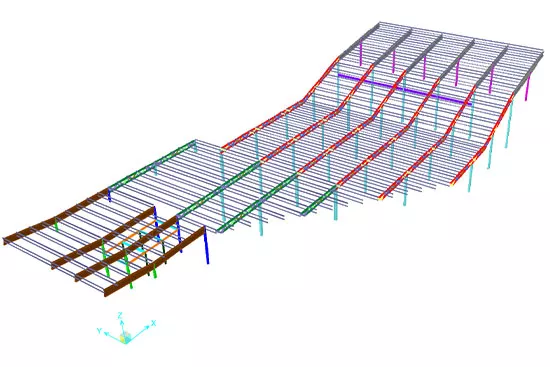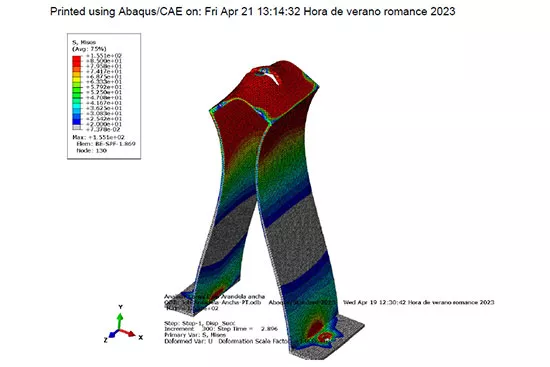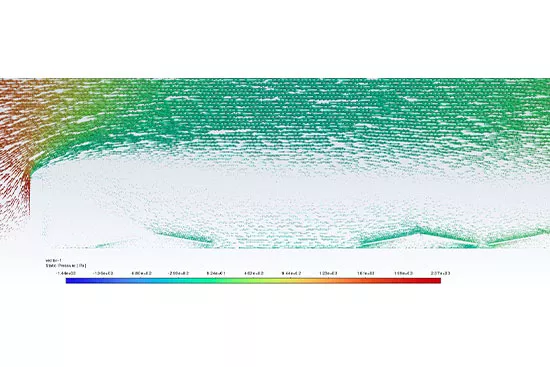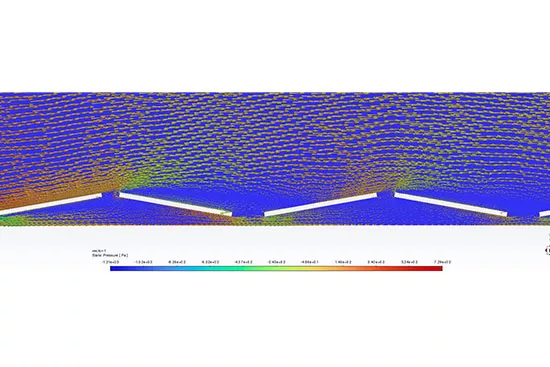Mechanical structural analysis
Need a mechanical structural analysis?
Mechanical calculation of structures is a specialized branch of civil engineering that focuses on analyzing and predicting the behavior of structures subjected to various forces and loads, such as gravitational loads, seismic forces or winds, among others.Engineers use mathematical models and advanced computational tools to calculate and optimize the strength and stability of structures, ensuring they meet established safety and design standards.
Types of mechanical calculation in structures
Key factors in mechanical structural analysis
Loads and forces
Material properties
Structural analysis
Design and dimensioning
Importance of mechanical calculation of structures
- Safety: The safety of individuals who will use the structures is of paramount importance. Mechanical calculation ensures that constructions are robust enough to withstand anticipated loads and prevent collapses or catastrophic failures.
- Efficiency and Economy: Proper calculation allows for the optimization of materials and resources, reducing construction costs and enhancing efficiency in the design and operation of structures.
- Adaptability to Specific Conditions: Each project has its own unique characteristics, such as soil type, geographic location, and climatic conditions. Mechanical calculation allows structures to be tailored to these variables, ensuring their long-term viability and durability.
- Regulatory Compliance: Structures must adhere to a set of construction standards and codes established by local and international authorities. Mechanical calculation ensures that constructions align with these standards and regulations.
Contact us
Basic information on data protection
Responsible: Cero Metros Cuadrados, S.L.
Purposes: Manage the sending of information that you request. Sending commercial communications.
Legitimation: Consent. You can withdraw consent at any time.
Recipients: Your data will not be transferred to third parties except in case of legal obligation.
Data subject's rights: To access, oppose, rectify and have their data deleted, as well as other rights as explained in the additional information.
You can access additional and extended information at this link.
FAQ
What methods are used for the mechanical structural analysis?
What is the importance of load tests in the mechanical structural analysis?
Load tests are crucial for validating and verifying the theoretical calculations made in the design of a structure. These tests allow for the evaluation of the actual load-carrying capacity and deformation behavior of the structure under controlled conditions. This helps confirm that the safety and performance requirements established in the design are met.
How are seismic conditions taken into account in the mechanical structural analysis?
In seismic zones, structures must be designed to withstand significant seismic forces. Dynamic analysis methods are used, and parameters like the seismic coefficient, response spectrum, and inertial forces are considered to ensure proper resistance and behavior in the event of an earthquake.
What is the role of materials in the mechanical structural analysis?
The materials used in the construction of structures directly influence their load-bearing capacity and behavior under different forces. Mechanical calculations must take into account the mechanical properties of materials, such as strength, elasticity, and durability, to ensure proper safety and service life of the structure.
What is the difference between static load and dynamic load in the mechanical structural analysis?
Static load refers to constant and predictable forces acting on a structure, while dynamic load involves forces that vary over time or are unpredictable, such as seismic loads, wind, and vibrations. Mechanical calculations must consider both to ensure the stability and safety of the structure.




